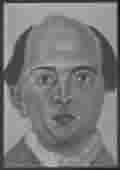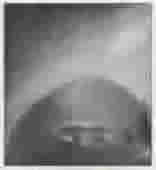So much has been written and said about the ‘atonality’ of ARNOLD SCHOENBERG that it is tempting to avoid addressing the issue altogether. Musicologically, it’s an awful can of worms. In the case of the Second String Quartet, however, the topic simply cannot be avoided, because the meaningful appearance and disappearance of tonal centers is so close to the heart of the piece’s meaning and reason for being. We can, however, find a few fruitful clues in and around the Second String Quartet, written in 1908, which bring some clarity to the discussion, and bring his motives somewhat to light.


First: in the time between 1906 and 1912 Schoenberg took strongly to painting. As a painter he was self-taught, but intense and intensely talented. His paintings (and his music) caught the eye of Wassily Kandinsky, who remained Schoenberg’s friend and exhibited some paintings alongside his own. Schoenberg’s paintings are suggestive in many ways; but, for our musical purposes, they are perhaps most suggestive in that, since he was also a self-taught composer (a point which often gets overshadowed by his huge harmonic erudition), they give us a broad perspective on his outlook. The Second String Quartet, like both the self-portrait and ‘gaze’ below, has a rawness of expression which would seem na’¢ve if its maker hadn’t (somehow) taught himself so much about what he was making. Perhaps above all (as many who have known him and studied his works have remarked) Schoenberg’s expressive capacity was overwhelming, a capacity which may come through from the images alone. (Alma Mahler wrote of him that he ‘suffers from inexhaustible Bohemianism’- a remark which can, and should, be taken in many ways.) Expressive desire, even more than tonal adventure, is the substance of the Second String Quartet.
Second, and more topically: the transition in the string quartet from its third to its fourth movement very clearly marks the transference of a new tonal awareness from Schoenberg’s ear and hopes to his pen and paper. The third movement, a setting of Stefan George’s Litanei (Litany) uses musical material from the previous two movements (albeit pulled and twisted like taffy); its speaker prays for release from what used to be. The fourth movement, a setting of George’s EntrŸckung (Rapture), carries with it a strange and tonally wandering answer, in mysterious waves of frequencies. The text of the poems means many things, both inside and outside the quartet, but it speaks, generally, of Schoenberg and his tonal methods. Indeed, if there is a marked entrance to Schoenberg’s revolutionary harmonic understandings, surely this is it.